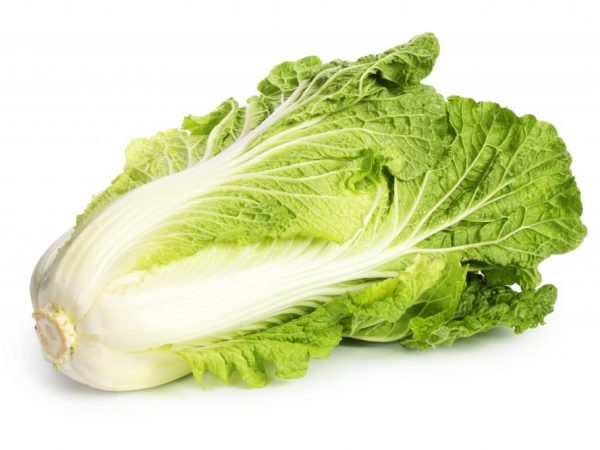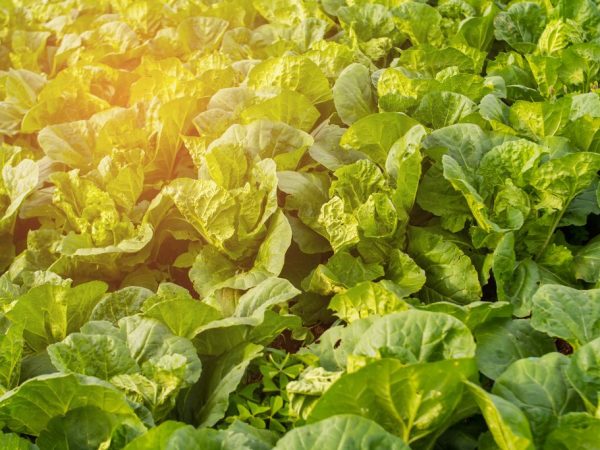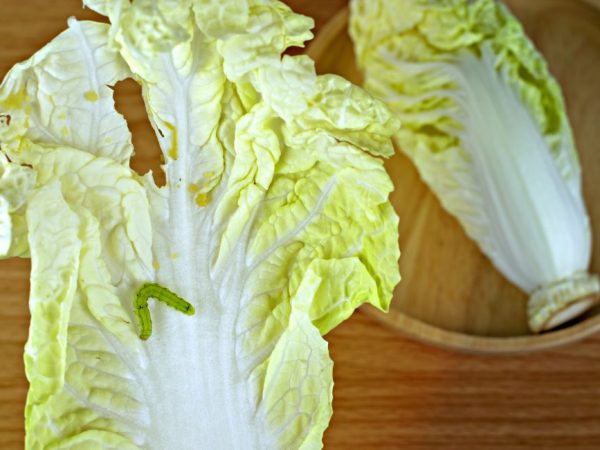Growing Chinese cabbage in the open field
Peking cabbage contains many vitamins, trace elements and fiber, it is low in calories and has a delicate taste. Other names for this healthy vegetable are petsai, nappa, pao, Chinese cabbage, celery and lettuce. Peking cabbage in the open field pleases gardeners with early maturity and ease of care.

Growing Chinese cabbage in the open field
Site selection
For proper development and good yields, a fertile soil with a high content of readily available organic matter is needed. Ideal is a light to medium loamy soil with good permeability and minimal clay content. A high growth rate is favored by light marshy (peat) or super-sandy soils with a deep moisture-consuming arable layer.
In the fall, lime fertilizers (calcite, dolomite, limestone, slaked lime) are applied to acidic soils in order to stimulate plant growth and reduce the threat of the spread of peronosporosis.
Poor sandy soils are not suitable for planting Chinese cabbage. They quickly warm up and do not form a crust after moistening, rapidly losing moisture reserves. Solonetzic soils are characterized by difficult outflow of surface and subsoil waters, which also makes them unsuitable for growing crops with seeds or seedlings.
The crop should not be planted after crucifers, beets and tomatoes that have common diseases and insect pests. Best grown after green manures, garlic, onions, pumpkin seeds, potatoes, legumes, or grains.
Landing
It is necessary to dig up the soil, add organic fertilizers to it (a bucket per 1 sq. M) and harrow.
It is necessary to plant Peking cabbage in the ground based on the growing method:
- Seedless (seed) method. Sowing begins in early May after warming up the soil. If the goal is to harvest in the fall, then the seeds are sown in early to mid-July. It is necessary to grow a salad culture according to the 20 × 30 scheme, with the formation of a head of cabbage - 35 × 35 or 50 × 50 cm. Sowing of seeds is carried out at the rate of 2 g per 5 square meters. m.
- Seedling method. Seedlings are planted in the first ten days of May according to the 30 × 50 scheme.At least 3 weeks should pass from the moment of emergence of seedlings for 4-5 true leaves to form. Plants need abundant watering before starting the transplant. It is better to initially grow seedlings in individual containers, so that when planting in open ground, they do not damage the delicate root system.
Care

Take good care of your plants
Care rules:
- Maintaining optimal temperature. The ideal temperature for outdoor cultivation is 16 ° C-19 ° C during the day, 8 ° C-10 ° C at night. Air humidity should be 70-80%, soil - 60-65%.
- Covering with agrofibre or other lightweight nonwoven material immediately after disembarkation. The shelter pursues several goals at once: protection from sudden temperature fluctuations, scorching rays of the sun, cruciferous flea beetles and stimulating the rapid formation of heads of cabbage.
- Mulching (surface covering of the soil) with straw or peat in 12-16 days from the moment of planting.
- Delicate loosening of soil around the crop and weeding of weeds. Care should be taken not to accidentally damage the covering leaves of the vegetable when weeding.
- Abundant watering of the plant at the root. It is held once a week: early in the morning or late in the evening. During drought, daily sprinkling (small-drop irrigation) is optimal. It is important not to allow stagnation of water, otherwise the root system will rot.
- Fertilization. In the open field, Peking cabbage needs the introduction of organic fertilizers as early as 12-16 days after planting. In the future, for better growth and development of petsay, complex fertilizers are applied. A crop planted in spring is fertilized 3 times during the growing season, planted in summer - 2 times. Chinese cabbage is genetically predisposed to the accumulation of nitrates, therefore, it is necessary to strictly limit the amount of nitrate fertilizers applied.
Insects and pests
To grow petsai in a country house or garden plot, take into account the risk of infection or insect infestation and the ability to correctly and timely take measures to improve the plant's health.
The threat to the cultivation of Peking cabbage in the open field is posed by:
- caterpillars of turnip white (turnip);
- slugs;
- cruciferous fleas.
For the fight, it is better to use folk methods, and not chemical insecticides.
Ways to fight
Inspection and manual collection of found eggs helps to prevent the invasion of repnitsa and the destruction of cruciferous weeds (shepherd's purse, rape, mustard), which attract butterflies.
Slugs do not tolerate the heat of the day well, so they eat in the evening or at night. To combat them, spraying cabbage with strong coffee, a solution of ammonia or a weak saline solution is used. To prevent damage to the culture by slugs, it is necessary to destroy weeds in a timely manner, remove garbage on the site (mollusks like to hide in it from the sun) and prevent dampness.
The ground around the plantings is sprinkled with sand, small pebbles or crushed eggshells so that pests cannot crawl to the petsai.

You need to get rid of insects
To protect crops from cruciferous fleas, you can plant tomatoes, onions or garlic between the rows of Chinese cabbage (seeds or seedlings). Effective methods of dealing with flea beetles are also:
- dry pollination of plantings with a mixture of ash and lime, wood ash and tobacco dust, or ash and ordinary dust;
- dry pollination of paths between the rows of seedlings with mothballs or tobacco dust;
- spraying with herbal decoctions (garlic, dandelion leaves and roots, wormwood, potato tops, etc.).
Diseases and treatment
To grow a healthy culture, you need to fight diseases that are provoked by improper care or climatic conditions in time.
Peking cabbage diseases:
- black leg (rhizoctoniasis);
- fusarium wilting (tracheomycosis);
- dry rot (phomosis);
- downy mildew (downy mildew);
- keela cruciferous;
- mosaic;
- black spot (alternaria);
- white rot (sclerotinosis, watery soft rot);
- slimy bacteriosis (wet bacterial rot).
An effective method of combating fungal diseases (rhizoctonia, peronosporosis, etc.) is the use of fungicides (Fundazol, Horus).
A viral infection (mosaic) is incurable and requires immediate removal of the affected plants.
The appearance of bacterial diseases in most cases is associated with weather conditions and improper crop care. These lesions are also incurable.
For the prevention of diseases of Peking cabbage, treatment with special chemicals is necessary at the stage when the gardener sows seeds or plants seedlings. An important role in the prevention of diseases is played by the absence of weeds in the planting area, high-quality planting material and healthy soil.
Conclusion
It is not difficult to grow Chinese cabbage outdoors. The yield of a vegetable crop largely depends on whether the planting technology is followed, whether proper care and disease prevention are provided.
Simple agricultural technology and early maturity make Peking cabbage one of the most popular cruciferous species grown in our gardens and summer cottages. She is popular all over the world.


